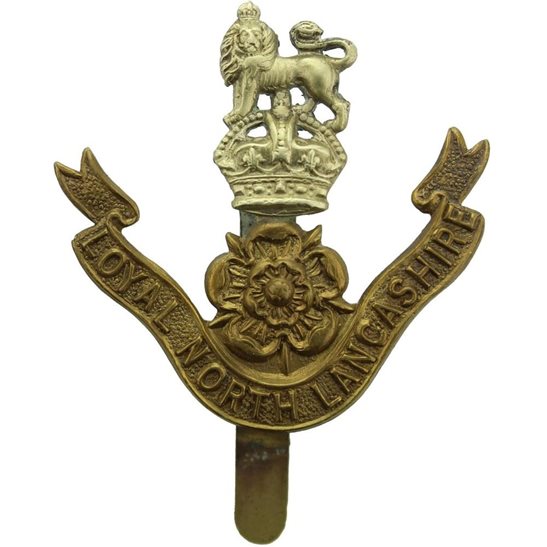Personal Details:
Born: 11 November 1869. There is some confusion as to George’s year of birth. He was baptised on the 6 February 1870 but his army pension sheet has his 55 birthday as 11 November 1925. Therefore we believe he was born 11 November 1869.
Family: The fourth child of George and Sarah Bennion of Bevans Yard, Yardington, Whitchurch, Shropshire. George married Mary Elizabeth King on the 10 August 1898 at St Mary’s, Preston and together they had 4 children – George Thomas, William Robert, Charles and Harry.
Civilian Occupation: School caretaker.
Residence: At the outbreak of the war he was living at 1 Lady Place, Preston.
Died: 25 March 1934
Military Details:
Regiment: Loyal North Lancashire Regiment
Rank: Sergeant Major
Service Number: 3402
Date of Enlistment: 1 September 1914
Date of Discharge: 10 March 1919
Reason for Discharge: Demobilisation
Other Information: George enlisted in the King’s Shropshire Light Infantry on the 12 March 1889 and saw service in several countries: Egypt, Hong Kong, India, Malta, Barbados and South Africa before being demobilised in March 1910.
George was awarded the Campaign Medals (1914/15 Star, British War Medal and Victory Medal).

The 1914 Star (also known as 'Pip') was authorised under Special Army Order no. 350 in November 1917 and by an Admiralty Fleet Order in 1918, for award to officers and men of the British and Indian Expeditionary Forces who served in France or Belgium between 5 August and midnight of 22–23 November 1914. The former date is the day after Britain's declaration of war against the Central Powers, and the closing date marks the end of the First Battle of Ypres.
The 1914–15 Star (also known as 'Pip') was instituted in December 1918 and was awarded to officers and men of British and Imperial forces who served against the Central European Powers in any theatre of the Great War between 5 August 1914 and 31 December 1915. The period of eligibility was prior to the introduction of the Military Service Act 1916, which instituted conscription in Britain.
The British War Medal (also known as 'Squeak') was a silver or bronze medal awarded to officers and men of the British and Imperial Forces who either entered a theatre of war or entered service overseas between 5th August 1914 and 11th November 1918 inclusive. This was later extended to services in Russia, Siberia and some other areas in 1919 and 1920. Approximately 6.5 million British War Medals were issued. Approximately 6.4 million of these were the silver versions of this medal. Around 110,000 of a bronze version were issued mainly to Chinese, Maltese and Indian Labour Corps. The front (obv or obverse) of the medal depicts the head of George V. The recipient's service number, rank, name and unit was impressed on the rim.
The Allied Victory Medal (also known as 'Wilfred') was issued by each of the allies. It was decided that each of the allies should each issue their own bronze victory medal with a similar design, similar equivalent wording and identical ribbon. The British medal was designed by W. McMillan. The front depicts a winged classical figure representing victory. Approximately 5.7 million victory medals were issued. Interestingly, eligibility for this medal was more restrictive and not everyone who received the British War Medal ('Squeak') also received the Victory Medal ('Wilfred'). However, in general, all recipients of 'Wilfred' also received 'Squeak' and all recipients of The 1914 Star or The 1914/1915 Star (also known as 'Pip') also received both 'Squeak' and 'Wilfred'. The recipient's service number, rank, name and unit was impressed on the rim.

